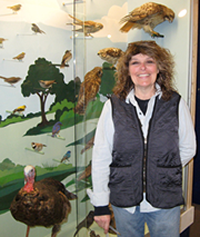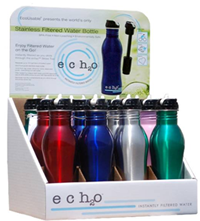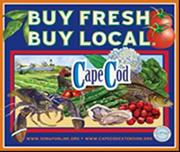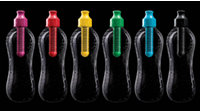
The Natural History Museum in Brewster: a place for birding, walking and volunteering
by Barbara Struna
The Cape Cod Museum of Natural History is alive and bursting with life.
From its humble beginnings in 1954, where it was housed under a tent, to the current 17,000 square foot building, this "natural" treasure nestled on 80 acres in Brewster and surrounded by 300 acres of town conservation land speaks to the very young and the young at heart.
On a recent Saturday morning, I visited the CCMNH and met Barbara Knoss, Volunteer Coordinator for the museum.

A retired kindergarten teacher from Minnesota, Barbara had fond memories of vacationing on the Cape with her family, prompting her to settle on this sandy spit.
After arriving permanently, she happened to participate in a Wednesday Walk session at the museum.

Our readers can receive 10% off an entire order by entering coupon code ECO10 at www.ecousable.com

Buy Fresh Buy Local Cape Cod
Connecting you with locally-grown farm products
by Jessie Gunnard
"Cape Cod has farms? Really?"
In my job as Coordinator for Barnstable County's Buy Fresh Buy Local Cape Cod [www.buyfreshbuylocalcapecod.org] program, I often get this question.
True, we don't have acres and acres of corn or wheat rolling by as we whiz along Route 6, nor do we see pastures of grazing cattle along Route 28 (anymore), but our peninsula is home to many small farms that grow what the US Department of Agriculture calls "specialty crops" – the vegetables and fruits that we eat every day and all know we should be eating more of.
There are nearly a hundred farms on the Cape, growing everything from salad greens, tomatoes and potatoes to blueberries and apples, chickens and turkeys, and Christmas trees.
And that hundred doesn't even include the dozens of shellfish farmers who grow oysters and clams in our waters.

Quenching Our Thirst for Bottled Water
by Katie O'Sullivan
Bottled water.
A generation ago it was almost unheard of, but today's consumers spend billions of dollars on "designer" water in disposable plastic bottles. The evidence of this excess washes up on Cape Cod beaches every day.
According to studies, Americans throw away thirty billion plastic water bottles every year.
Most plastic bottles don't get recycled and either spend 1,000 years decomposing in landfills or release chemicals into the air when incinerated. Huge garbage masses of "plastic stew" have been discovered in every ocean on the planet.

